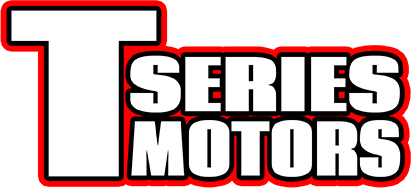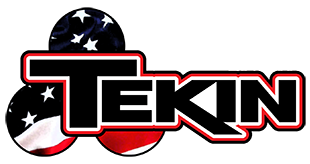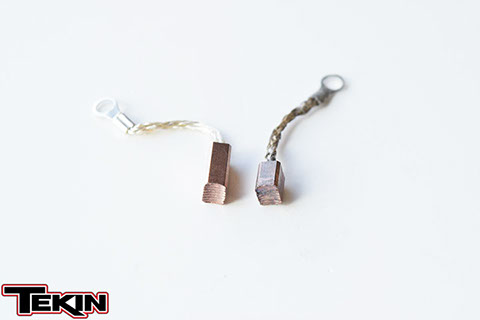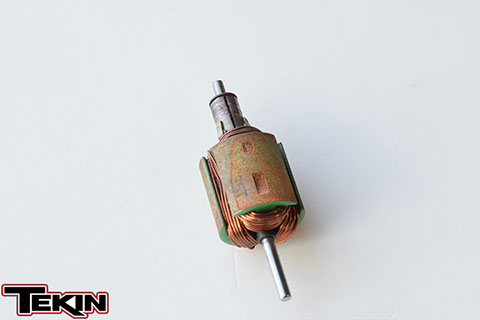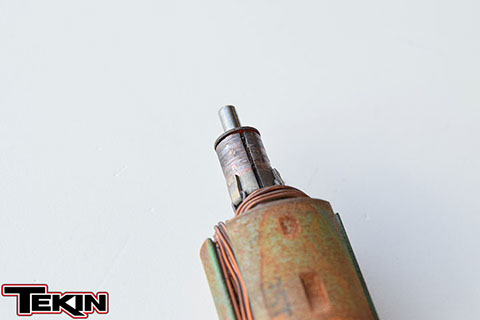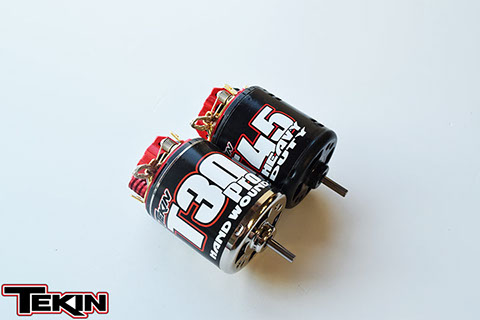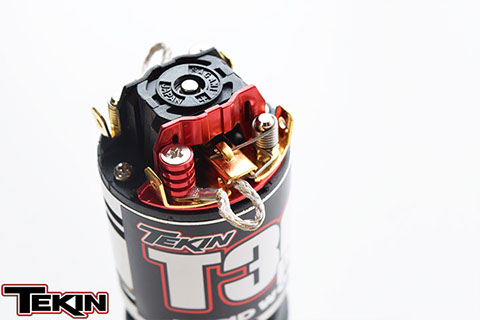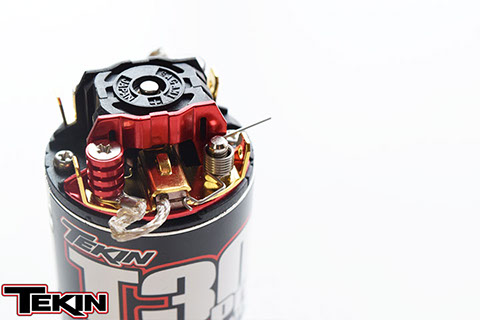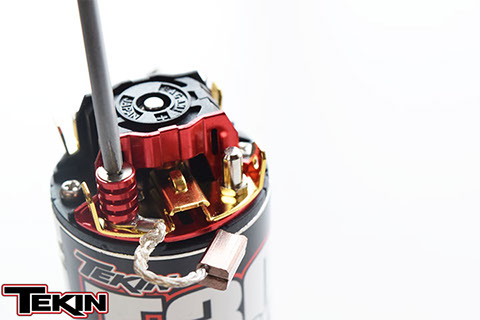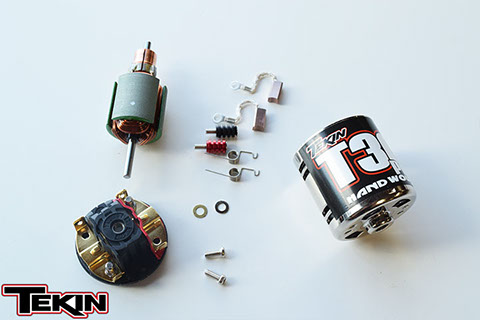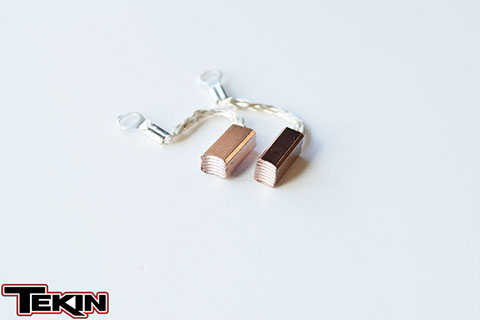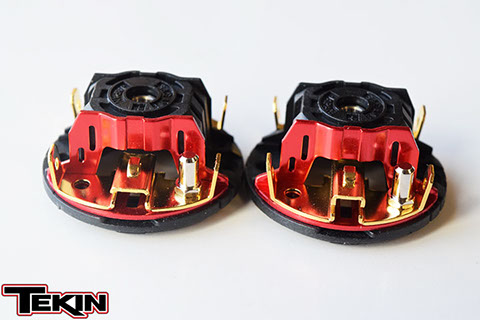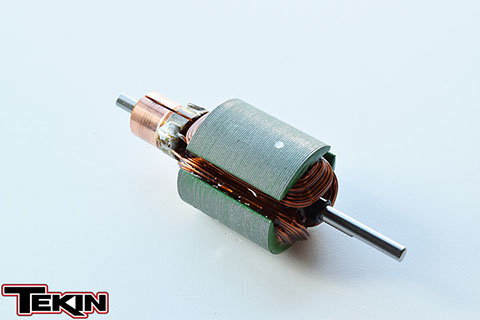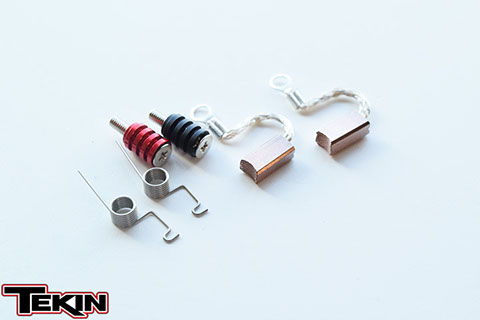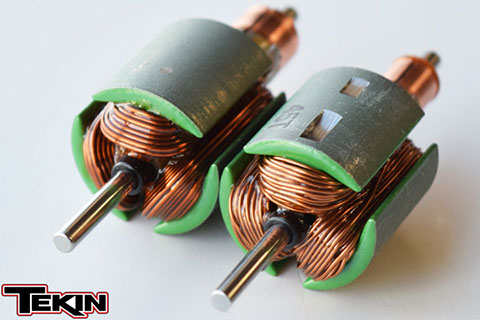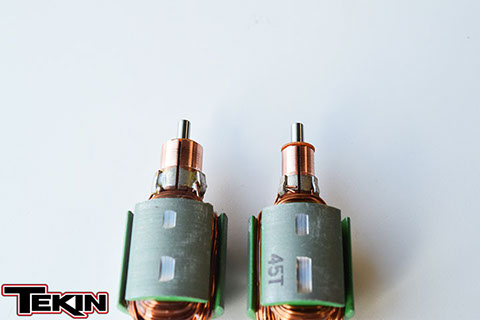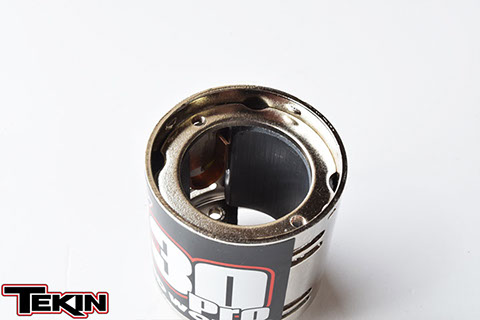
Brushed motors are not maintenance free. Brushed motor parts wear, but the good news is they are serviceable! There are ways to prolong the life of your brushed motor and the good news is that Tekin T-Series motors are rebuildable and it's easy to do yourself. Let's start with some brushed motor basic care.
First, let's get one big myth out of the way right now. DO NOT water break-in your brushed motor! This is a method leftover from the racing days of old. Hard brush compounds paired with a brush that was not pre-cut like so many are now made this method a way of seating the brushes, "breaking in" the motor. Our motors do not need this, in fact, it causes more harm than good. Water is abrasive and accelerates the wear of the brushes and the comm surface, essentially taking life away from your new motor very quickly.
Our motors don't really require a break-in before use, but you can run them on low voltage (4-6V) for a minute or two both directions to seat the brushes. Here's an example of a motor that was ran in water and spent only a few battery packs in a scale trail rig. Brushes are extremely worn and the comm is pitted, burnt and rough. Note the difference in brush length with new being about 10mm and extreme wear about 5mm. 5mm length is about time to replace your brushes because the spring will not be able to apply enough pressure to keep the brush sitting on the comm surface and the motor may stop running or run intermittently.
This comm is quite obviously in bad shape. A few passes on a lathe and some new brushes should have this motor running again in no time. Comm lathes are somewhat rare now since the takeover of brushless technology, but they are still out there and very handy to have in the pit!

Motor disassembly and brush replacement are both very easy. Your motor needs to be checked often, especially if it sees water. All you need is a small Phillips screw driver to tear town a T-Series motor for inspection and maintenance.
Start by removing the brush springs, be careful as they can sometimes launch across the room never to be seen again.
Remove the brushes from the brush hood. Remove the brush screws and set them aside with the brushes.
Now you can remove the two screws holding the endbell on. Be sure to mark where your timing is set and note which way the endbell is oriented. We typically run 0* on crawler motors, sometimes up to 5* advance so forward is a little bit more power than reverse. Note that if you reinstall the endbell backwards, the motor will turn backwards. This can be used to reverse the rotation if your transmission requires it.
Make sure you keep both shims found on the armature. There should be one on each end! If the comm looks good, reassemble the motor by reversing through the steps above, clean out the brush hood with a pipe cleaner and install new brushes if needed. The comm surface can be cleaned off with an eraser. If there is any black coloring from the arcing, it's a good idea to try to scrub that off the surface before installing the new brushes.

Brushed motors are actually very simple. In RC we work with DC current and it flows through electronic circuits much like water flows through pipes. We open up a path, the current flows through, things happen. Brushed motors have a positive (+) side and a negative (-) side. This is where the power travels through wires that are attached to the motor outputs from the ESC (electronic speed control).
The current is then transferred to a brush on each side of the motor. The brushes sit in the brush hood and are attached to the motor end bell by a screw or solder joint and held in constant pressure with a spring. There are stand up and lay down styles of brush. The Pro motors use a lay-down style (left) and the HD motors use a stand-up (right). The brush hoods on the two motors differ to accommodate the different brushes used.
The spring pushes the brush into the commutator at the top of the armature inside the motor can. The "comm" as we call it, short for commutator, is the contact point where current is transferred from the brushes and into the armature windings. Brushes are a wear item and should be checked often depending on the environment you drive in. If there's lots of water and you frequently get your motor wet, you'll need to check the brushes for excessive wear. The comm is a wear item as well and should be inspected and cleaned frequently. You want a nice copper color and a smooth surface. If the comm is pitted, rusty or turning black these are all signs a cut may be needed on a comm lathe and that the brushes may be burnt or too short.
The armature holds the windings, which are lengths of wire(s) wrapped around each arm. Each wrap is called a "turn" and is how the motor ultimately is rated; really all you need to pay attention to when selecting. A 30T motor has 30 wraps (winds) of wire around each arm. Note the differences between the T30 Pro armature (left) and the T45 HD (right, top).
What's the difference between machine wound and hand wound? Machine wound motors are just that, wound by a machine and usually not wound as tight or precise as a hand wound. Hand wound armatures being wrapped precisely will usually contain less wire, resulting in lower resistance, and more power. Pro armature (left) and HD armature (right) both differ in the wind type as well as the comm sizes and brush styles.
The motor can has two magnets inside that surround the armature. As current is sent through each of the three winding arms, the armature is pulled and pushed toward the magnets in the can and your rig moves. Being that the armature is a spinning part, the bearings need to be inspected, cleaned and oiled often. There is one in the motor can and one in the endbell. Both can be cleaned out with electric motor spray and re-oiled with a light bearing oil. Take good care of your bearings, they can really reduce motor performance and run time if they are neglected.

